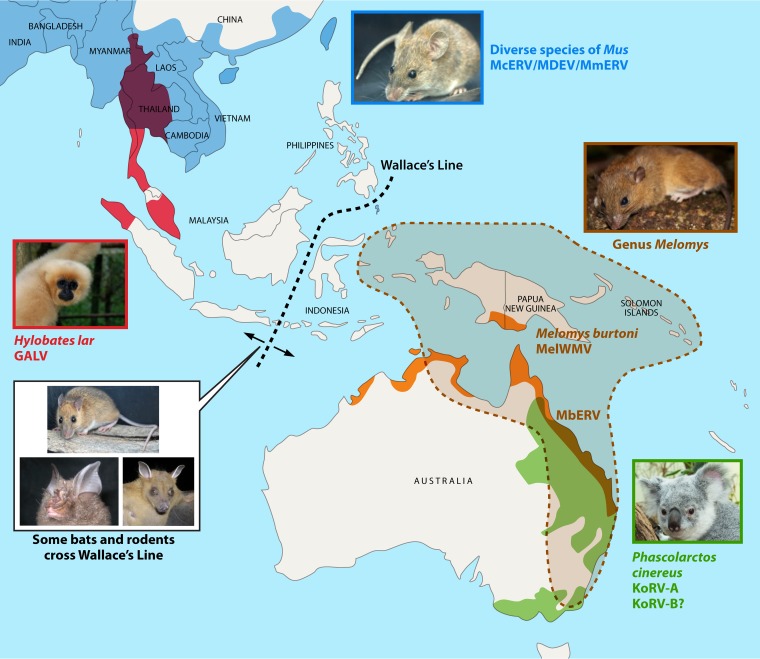FIG 6.
Geographic distributions of species harboring KoRV, GALV, and related retroviruses. Red shading indicates the historical distribution of the white-handed gibbon (Hylobates lar); five GALV strains have been isolated from this species. The range of several species of Mus (Mus cervicolor, Mus dunni, and Mus musculus), carrying McERV (296), MDEV (297), and MmERV (298), respectively, is indicated in blue; Mus was originally proposed as the source of GALV. The green region approximates the range of koalas (Phascolarctos cinereus) in eastern Australia, many of which carry KoRV-A. The distribution of KoRV-B among wild koalas has yet to be determined. Orange shading indicates the range of Melomys burtoni and the two GALVs identified in this species: MbERV and MelERV. The broken brown line and shading indicate the overall distribution of the genus Melomys. Wallace's Line (dashed black line) is a biogeographic (deep water) barrier separating the terrestrial fauna of Southeast Asia, including western Indonesia, from that of eastern Indonesia, New Guinea, and Australia. (Photographs courtesy of Serge Morand and CeroPath [rodents], Tilo Nadler [gibbon], Daniel Zupanc [koala], and Neil Furey [bats].)

